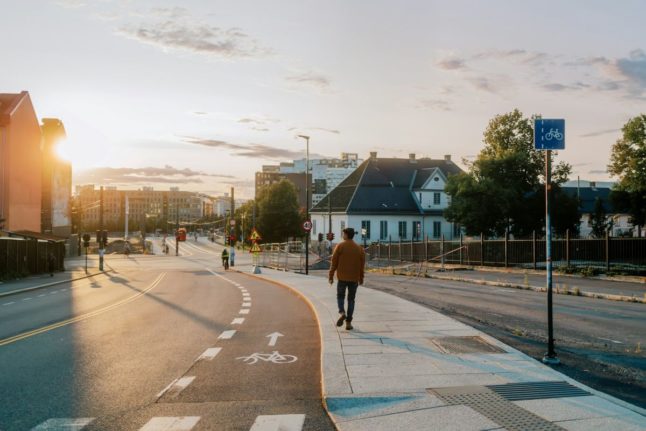Winter and seasonal tourism in Norway is a massive industry in Norway- thanks in no part to it hosting some of the best skiing in Europe outside of the Alps.
As a result, winter tourism is an important contributor to the Norwegian economy, especially in smaller municipalities that are reliant on the tourism and trade that attractions like ski resorts or natural phenomena like the northern lights bring.
The winter ski season runs from November until May in most places in Norway, depending on when the first snow settles. Some resorts in the arctic circle will have snow until June.
But how can people find a job in the winter sports industry in Norway? Here’s what you need to know.
Where are winter jobs in Norway located?
Winter sports jobs can be found almost all over Norway. Ski resorts are the biggest draws for both workers and tourists.
Trysil, Hemsedal, Geilo, Hafjell, Voss and Hovden are Norway’s most popular resorts for both Norwegians and tourists.
A lot of the resorts in Norway are near smaller towns and villages. For example, Hemsedal, home to Norway’s second-largest resort, only has a year-round population of around 2,000.
So don’t expect the hustle and bustle of a resort city like Innsbruck in Austria, which has a permanent population of 130,000 people.
This means a lot of the towns have a smaller, cosier feel, especially during the week. In addition to this, none of the bigger resorts can be found anywhere near airports or major cities, meaning long journeys may be required to get to the resort you are planning to work at.
What types of jobs are available in the winter sports industry?
For most people looking for a winter sports job, a seasonal job in hospitality is the most straightforward option for foreigners.
Every resort will have a number of restaurants, hotels and after-ski venues, and they all need seasonal staff in the form of waiters, waitresses, receptionists, cleaners and housekeepers.
Other winter sports jobs in Norway include ski instructors, park shapers at snowboard parks, lift operators and resort reps.
There are also some office-based jobs in marketing and advertising, but these are hard to come by, especially for foreigners. Furthermore, a strong grasp of Norwegian will be required as you’d often be liaising with Norwegian businesses.
These positions typically require a certain level of education and professional experience, though and are not always based directly in mountain resorts.
In Norway, Scandinavian language skills give applicants an edge but aren’t essential. Many tourists from Norway and elsewhere have come to expect those working in hospitality to speak English, so if you don’t speak any Scandinavian languages, it won’t be a massive hurdle to getting a job in Norway. Still, you will be at a disadvantage compared to applicants from Sweden and Denmark who often work seasonal winter jobs in Norway.
READ ALSO: What wages can you expect when working in Norway?
How to find a winter sports job in Norway?
As with most industries, searching online is one of the first steps in finding a job in Norway.
Few jobs are listed in English but can be found on sites like Finn.no or the websites of ski resort operators such as SkiStar.
Applications tend to open in September and will run through to the beginning of November. One thing to be aware of is with some of the larger resort operators such as SkiStar, it may only be possible to fill in some applications in a Scandinavian language.
Personal networks are also a massive part of getting a job in Norway, no matter what industry you are in. If you can think of anyone who might have a link to the resort or business you want to work at, don’t be afraid to get in touch and try and take advantage of any network or contacts at your disposal.
Contacting the hotels, restaurants and resorts directly via phone or email to enquire about the possibility of applying for a job or any potential vacancies is one of the best bets for securing a job. September and October are usually the best times to start this process as businesses begin planning for the winter ahead.
Sending CV’s and applications in English shouldn’t be too big an issue as even though Swede’s and Dane’s make up a large part of the seasonal workforce, there are plenty of workers who don’t speak a Scandinavian language and come from other parts of Europe and the world.
Coming from overseas?
For those already living in the country or elsewhere in the EEA (with freedom of movement around the bloc), working a winter sports job in Norway can be relatively straightforward. However, workers from EU or European Economic Area (EU countries plus Iceland, Liechtenstein and Norway) must register with the police no later than three months after arriving. And, of course, all workers new to Norway will need a D-number. You can find out how to get a D-number here.
If you already have a Norwegian permit of some kind the rules may be a bit different. Work permit holders will need the job to be relevant to their qualifications and they will need to probably apply for a new permit. Those with a family immigration permit, should face less obstacles.
A work permit will be required for those from outside the EU/EEA. A work permit can be granted to skilled or seasonal workers. The Norwegian Directorate of Immigration (UDI) has an overview of the rules for skilled workers and seasonal workers on its website.



 Please whitelist us to continue reading.
Please whitelist us to continue reading.
Member comments